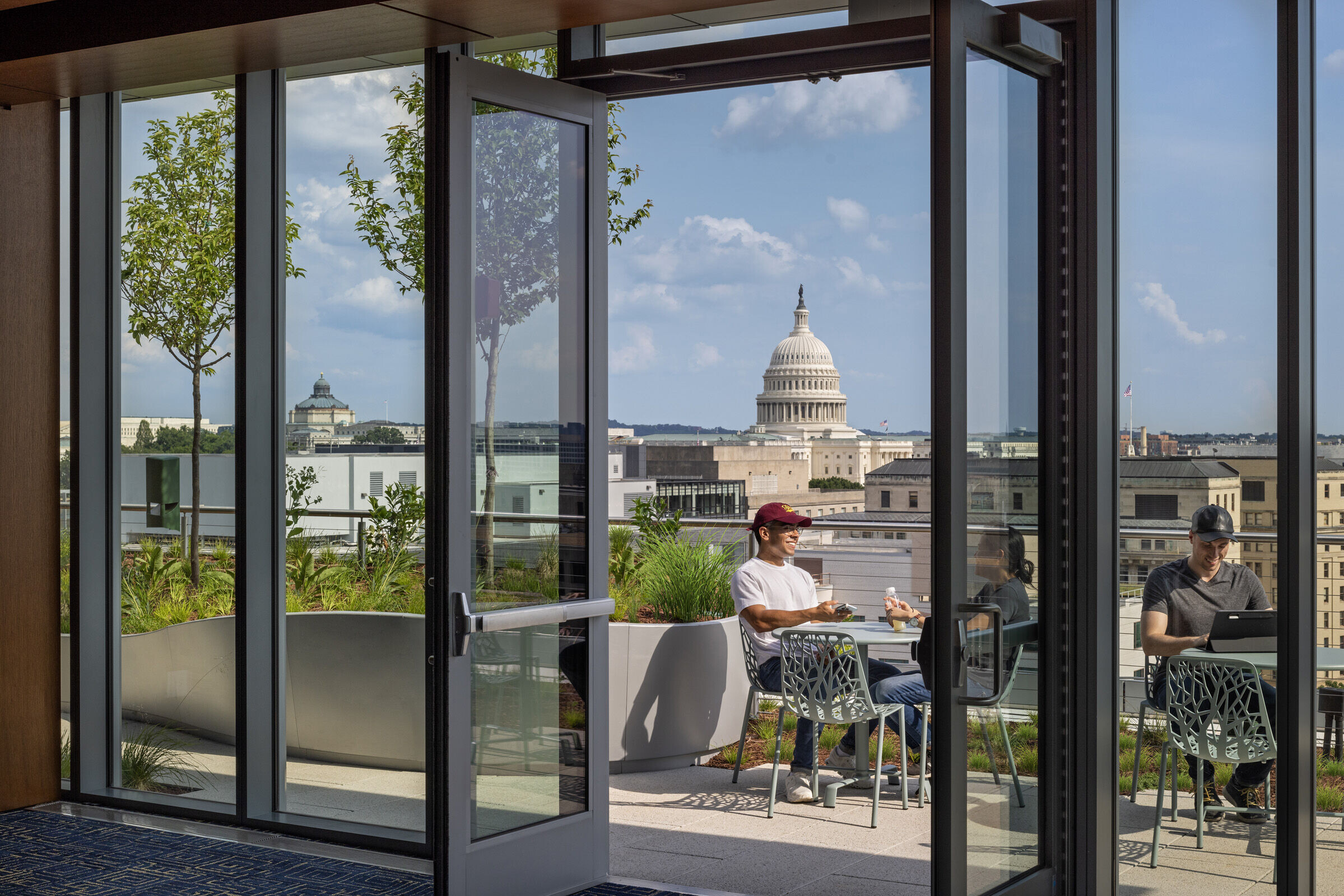Robert A.M. Stern Architects (RAMSA) has designed a new flagship home for the McCourt School of Public Policy at Georgetown University’s Capitol Campus in downtown Washington, D.C.
Georgetown's previous home for public policy was located on the university’s historic Hilltop Campus. The new 150,0000 sq-ft building for the McCourt School of Public Policy, located at 125 E St. NW, unites policymaking students, faculty, staff, and researchers under one roof for the first time in school history.
The McCourt School’s 125 E St. home is an expanded academic hub for students, faculty, researchers, and the wider policymaking community in the nation’s capital. The building houses extensive educational and community spaces, including 20 classrooms, an expansive main commons, academic offices, a 400-seat auditorium, and a large rooftop terrace with sweeping views of the U.S. Capitol and a 280-seat venue.
As an academic center devoted to addressing complex national and international challenges, the McCourt School of Public Policy expectedly prioritizes sustainability and energy efficiency. The new building is designed to achieve LEED Platinum certification, in line with Georgetown University’s own sustainability goals. Additionally, a series of original site-specific installations by architect, designer, artist, and sculptor Maya Lin encourage building users to consider their natural surroundings.
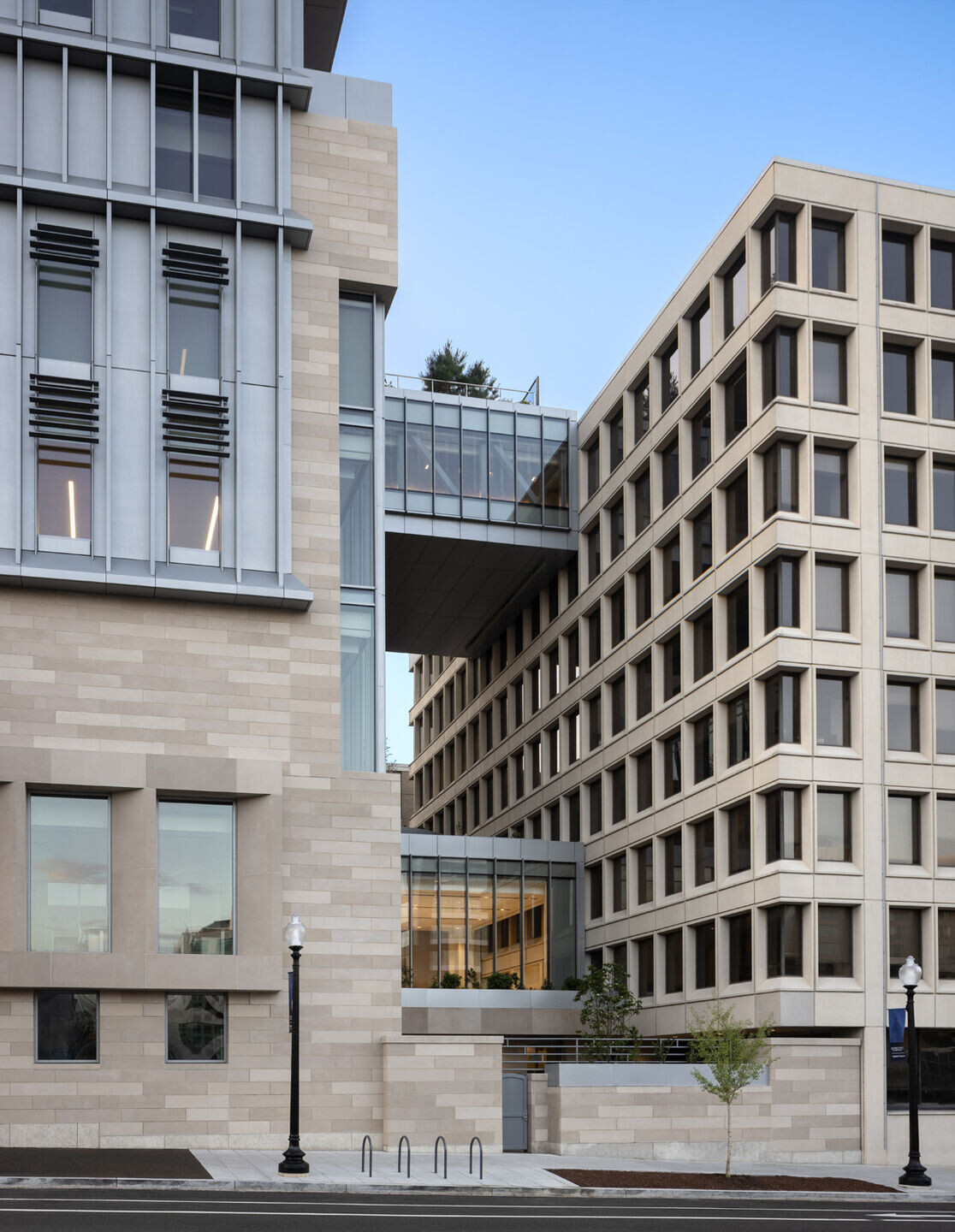
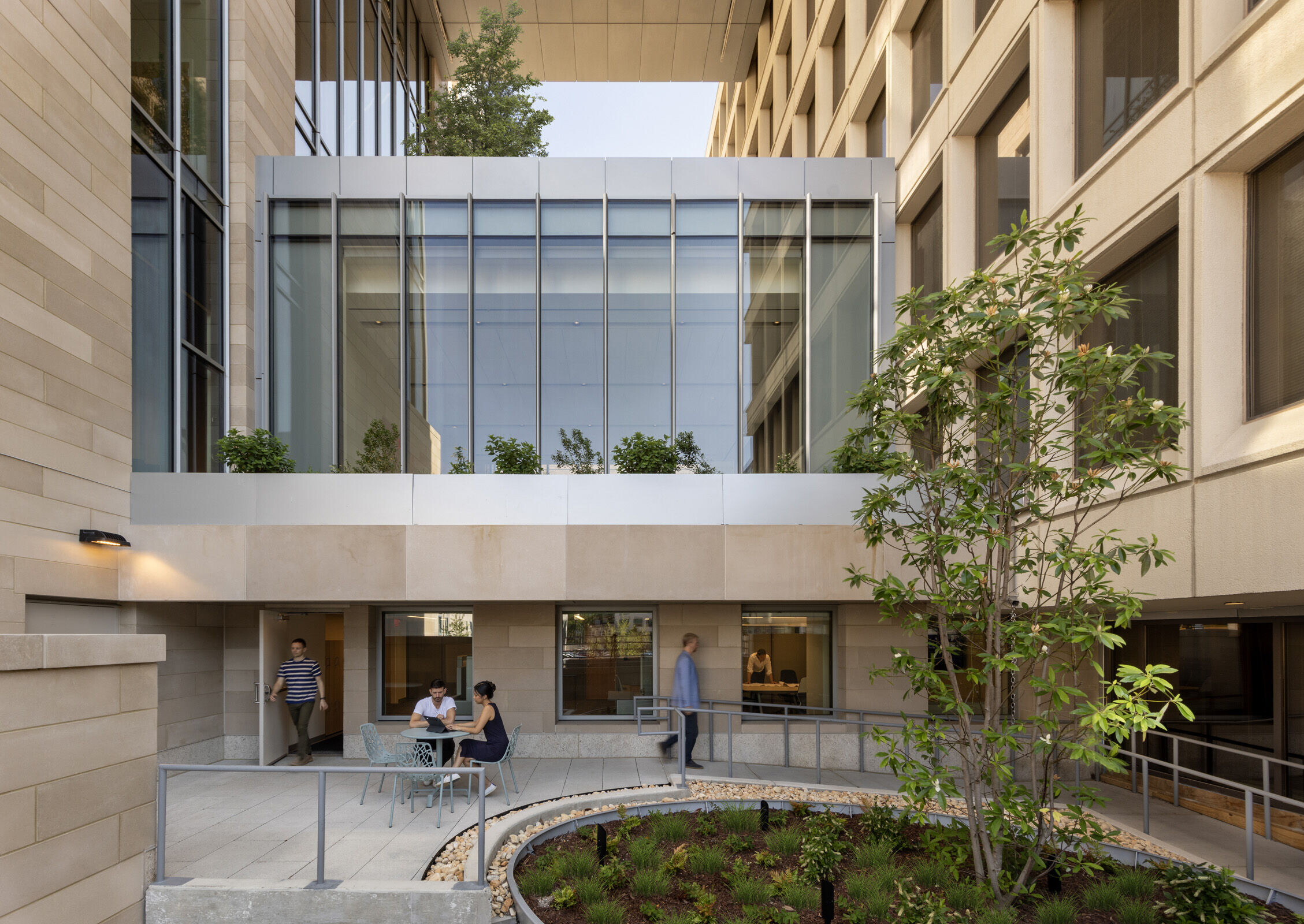
A contextual addition to the Capitol Campus
The McCourt School, a flagship building of the Capitol Campus, is a contextual and coherent extension of Georgetown’s downtown presence. A cube clad in stone, panelized metal, and glass curtain walls, 125 E St. carries forward the form and scale of its neighbors. Vertical fins and brise-soleil—which primarily mitigate against sun exposures and optimize thermal performance—articulate the building’s façade with projecting lines that echo the uniform punched windows of the neighboring 500 First Street NW. The McCourt School’s 125 E St. building, however, introduces new visual interest with its interplay of metal, stone, and glass.
The McCourt School directly links to its neighboring buildings and green spaces to physically integrate itself into the broader Capitol Campus. A 6th-floor skybridge connects to a floor-wide suite of convening and conference spaces in the adjacent 500 First Street NW. From the second-floor level, a landscaped promenade travels over an existing structure and down a newly constructed grand stairwell to provide convenient pedestrian access to the Eleanor Holmes Norton Green.
“The architecture of the McCourt School’s new building balances its place within two overlapping contexts: a well-defined urban university campus and downtown Washington, D.C. The building reads like an extension of the Capitol Campus, while also animating the pedestrian experience,” explains Graham Wyatt, Partner, RAMSA.
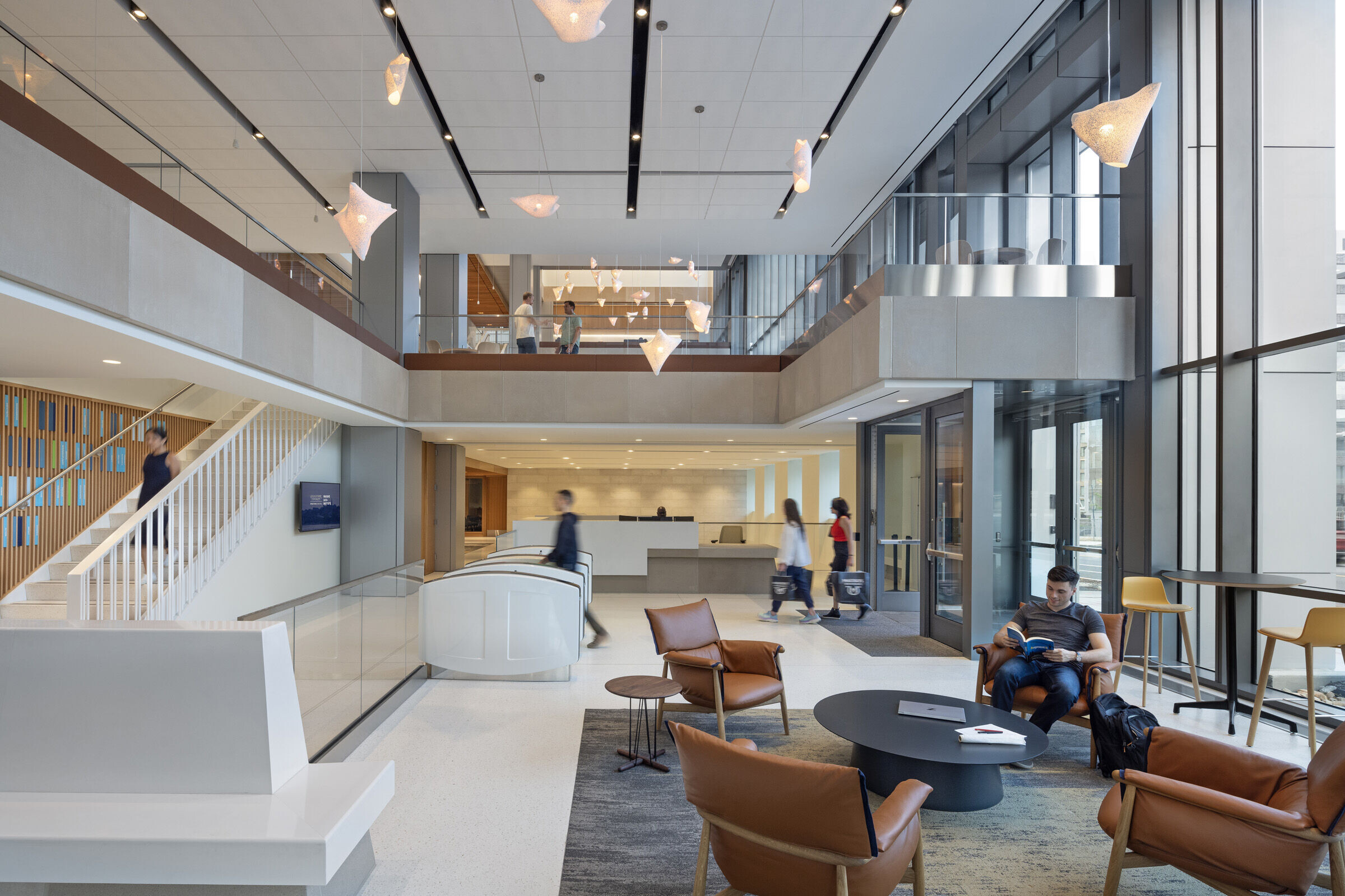
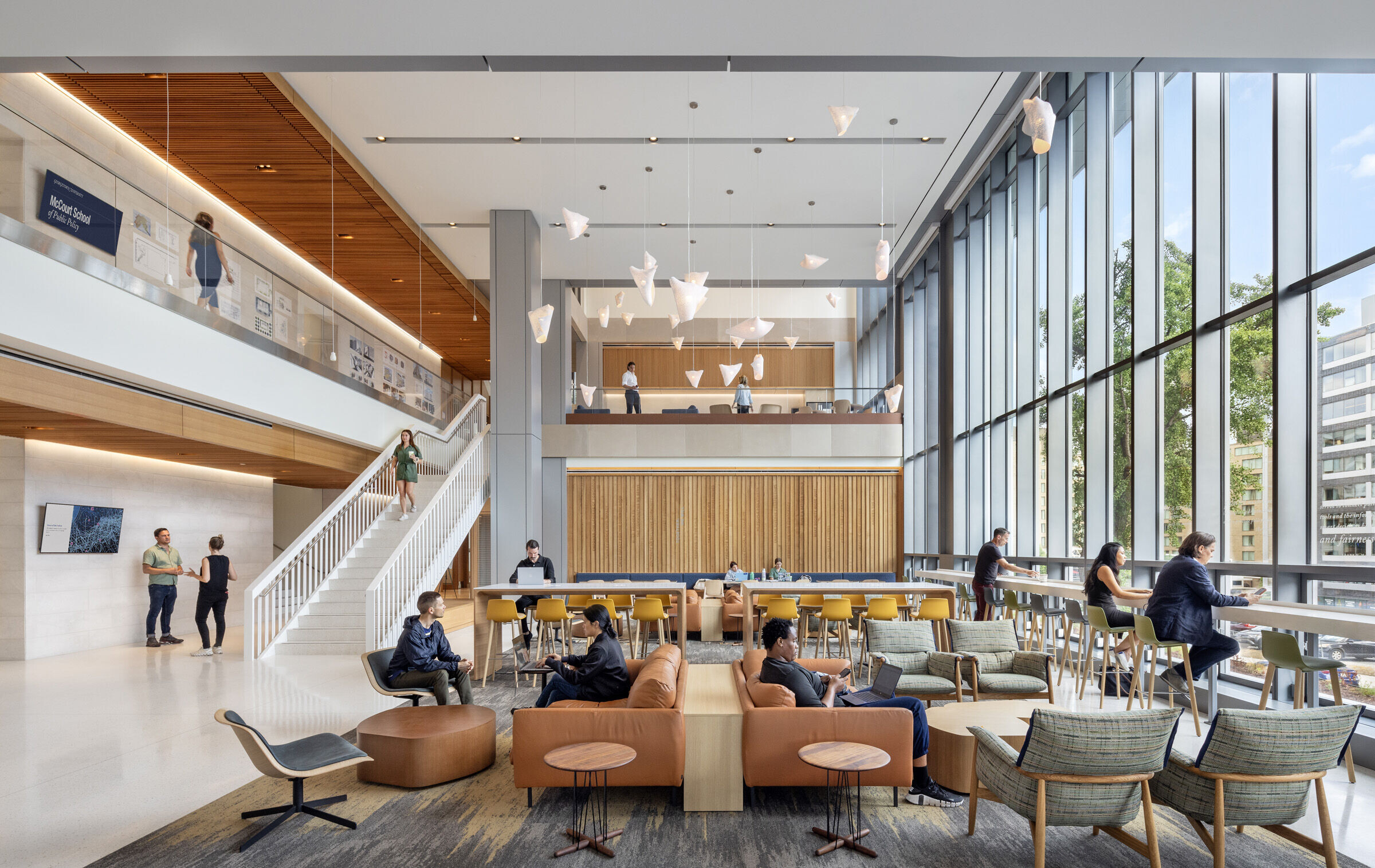
A hub for Washington, D.C.’s policymaking community
A convener of important conversations, the McCourt School of Public Policy’s interior architecture has been shaped by the unique educational opportunities afforded by its location, namely its proximity to the nation’s premier policymaking bodies, such as the U.S. Capitol and the Supreme Court.
A 400-seat auditorium with broadcast capabilities and a 280-seat rooftop venue, along with other convening spaces, can host leading policymakers and practitioners for important discussions related to national and international policymaking.
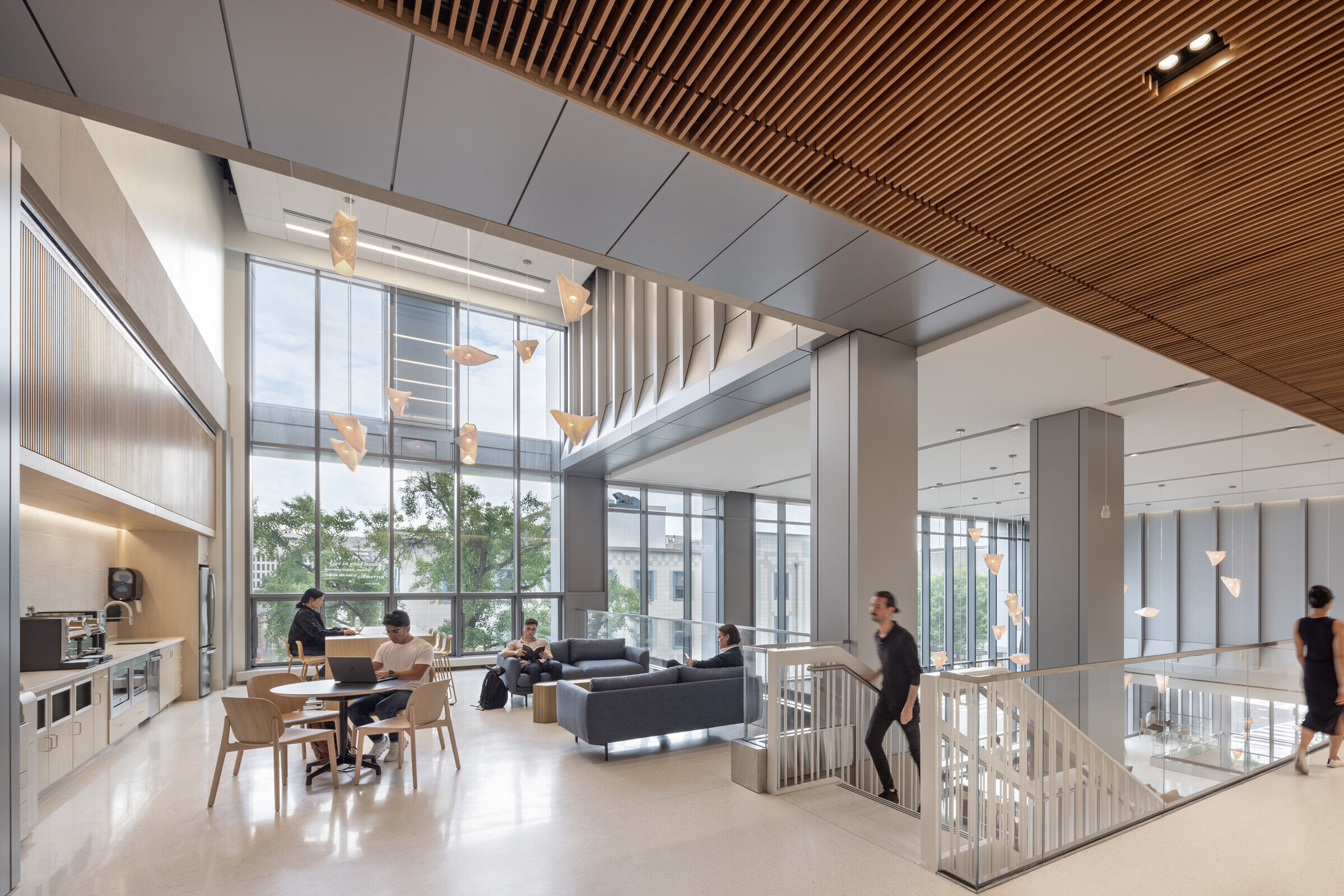
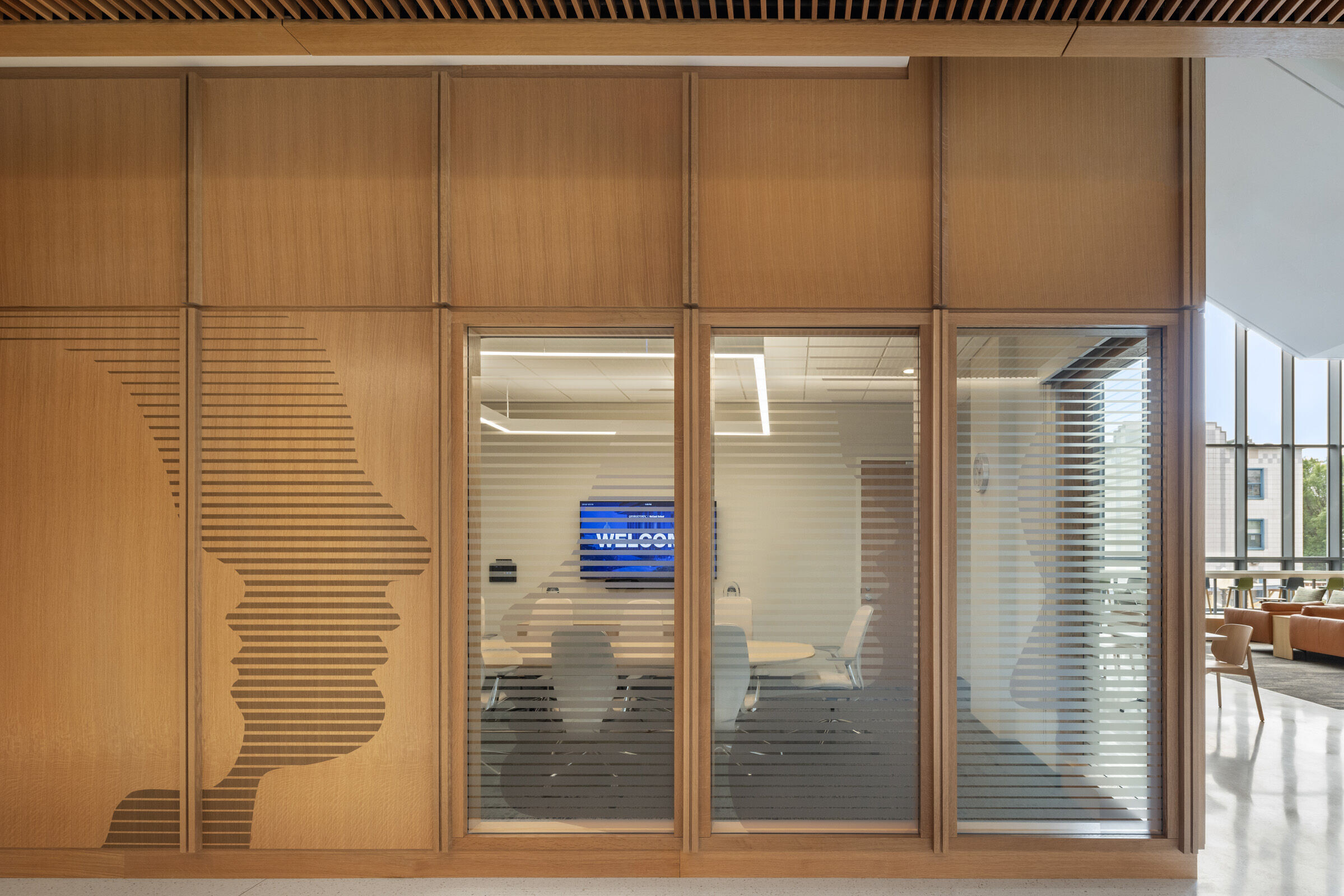
A non-hierarchical home for students, faculty, staff and researchers
The McCourt School’s new home consciously draws faculty, students, and staff together. The building’s design promotes organic interactions and chance encounters to foster a robust, interconnected, and inclusive academic community.
Beginning in the light-filled double-height atrium, a “traveling staircase” connects the building’s nine levels. Instead of winding directly upward, however, this staircase traverses the building, requiring students and faculty to pass through various spaces when traveling to an office or classroom. An architectural expression of the school’s connectivity and vibrant community, this staircase resists the formation of academic siloes or hierarchies around location.
“The McCourt School aims to draw students, faculty, staff, researchers, and the larger policymaking community together through its architecture. It is an appropriately modern home for a globally renowned policy school in the U.S. capital,” says Kevin Smith, Partner, RAMSA.

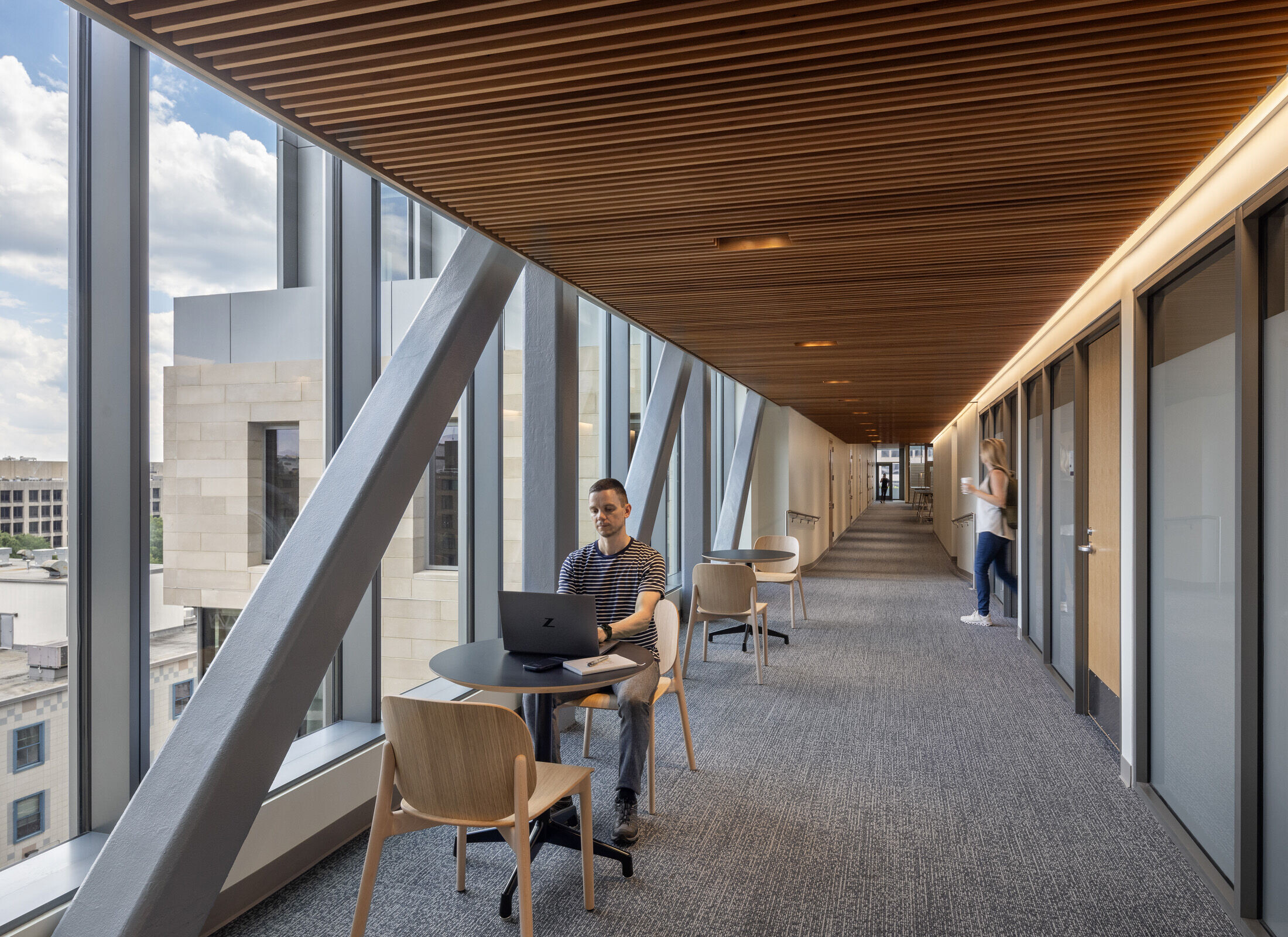
Original installations by Maya Lin animate interior spaces. Lin, who designed the Vietnam Veterans Memorial in the early 1980s, is known for her large-scale environmental artworks and installations. The McCourt School’s collection of installations, titled “Mapping Our Place in the World,” grounds occupants in place and prompts them to consider their connection to the larger world.
The collection includes “Following the Potomac,” a ceiling-mounted composition of glass marbles that resembles a birds-eye view of the Potomac watershed. In the main commons, a series of weather-responsive pendant lights titled “Whether Birds” change color according to the presence of sun, clouds, snow, or rain. Audio recordings of local waterways, wetlands, forests, and grasslands, made at various times of day and year, are broadcast through directional speakers above the primary staircase.
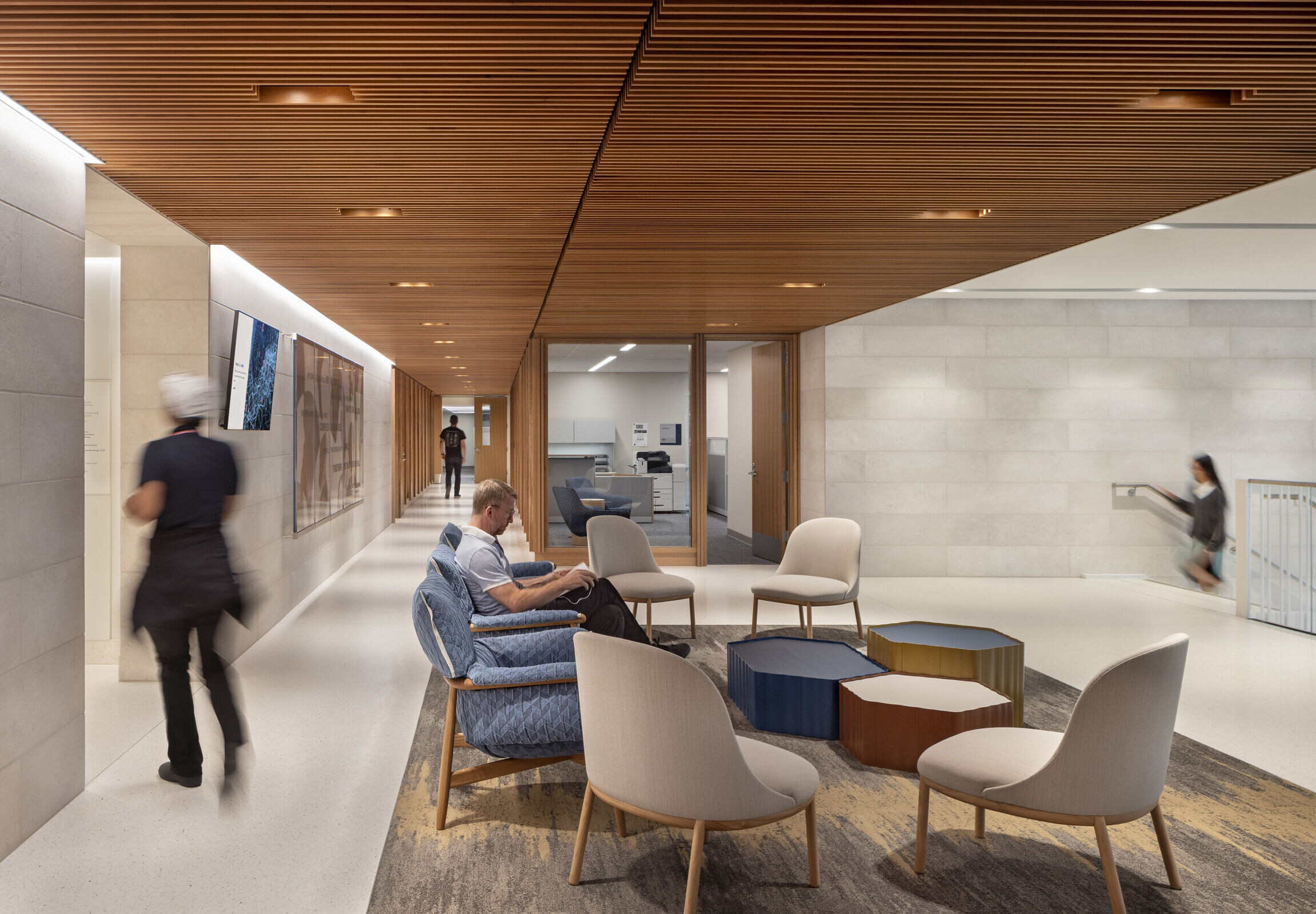
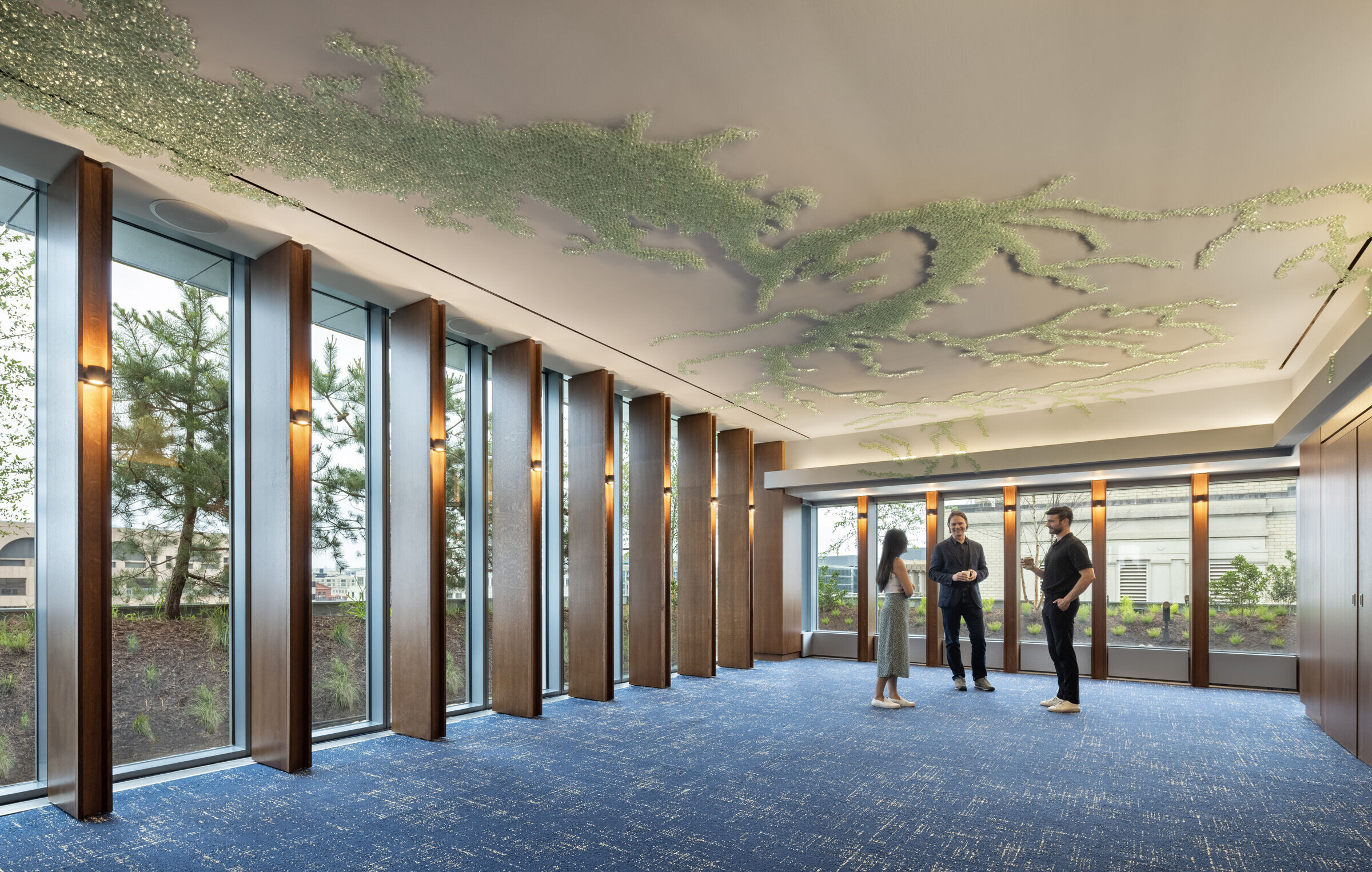
Lin also contributed to the design of the building’s roofscape. “The Sky Garden” is an outdoor terrace with elliptical pools and native plants, such as birch trees, pitch pines, ferns, and grasses. It offers opportunities for quiet conversation and respite, while celebrating regional ecology and framing views of the U.S. Capitol.
“Maya Lin’s installations are an artful and subtle reminder that we belong to a world that is bigger than ourselves. They are an essential and appropriate addition to the McCourt School and all that it stands for,” says Smith.
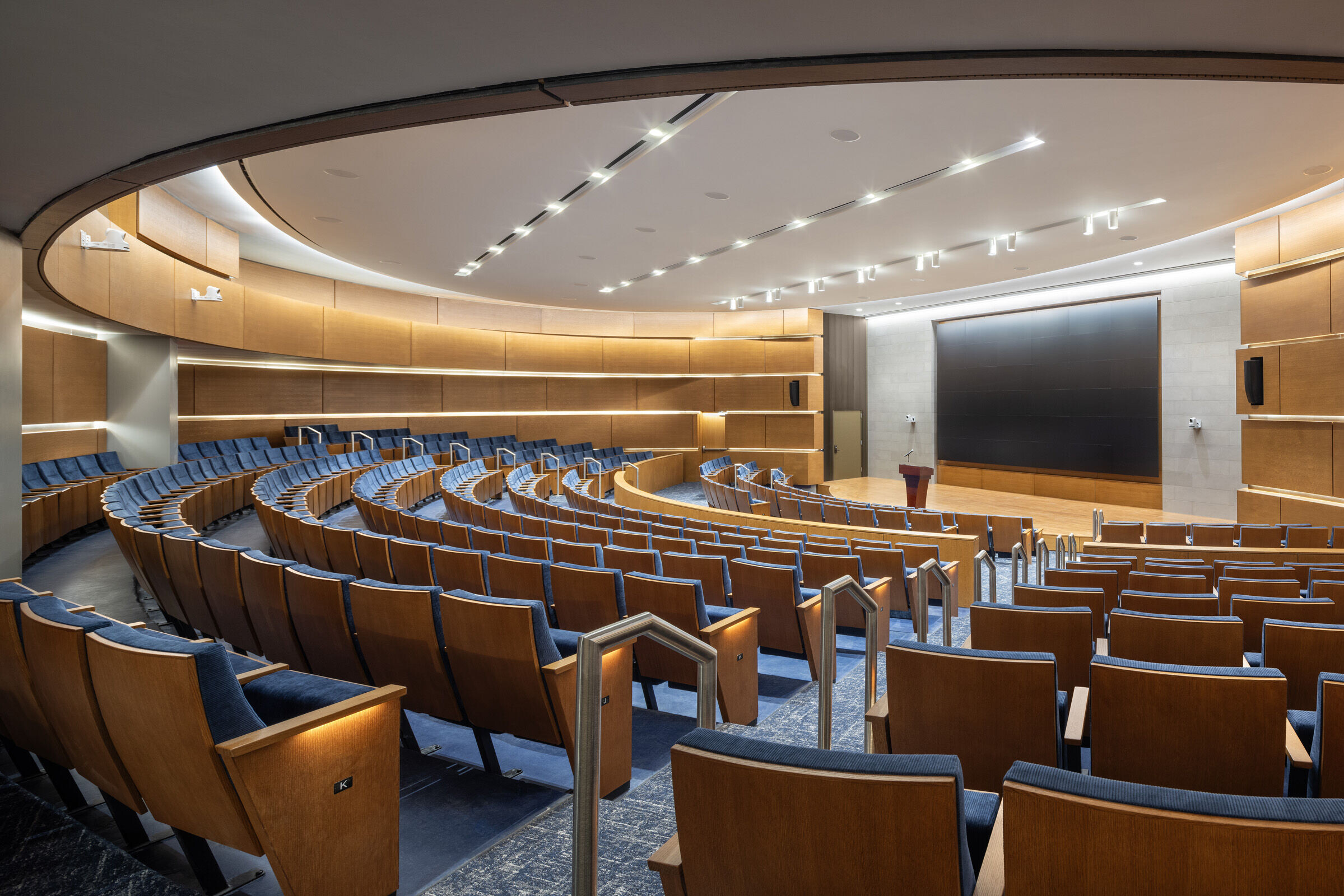
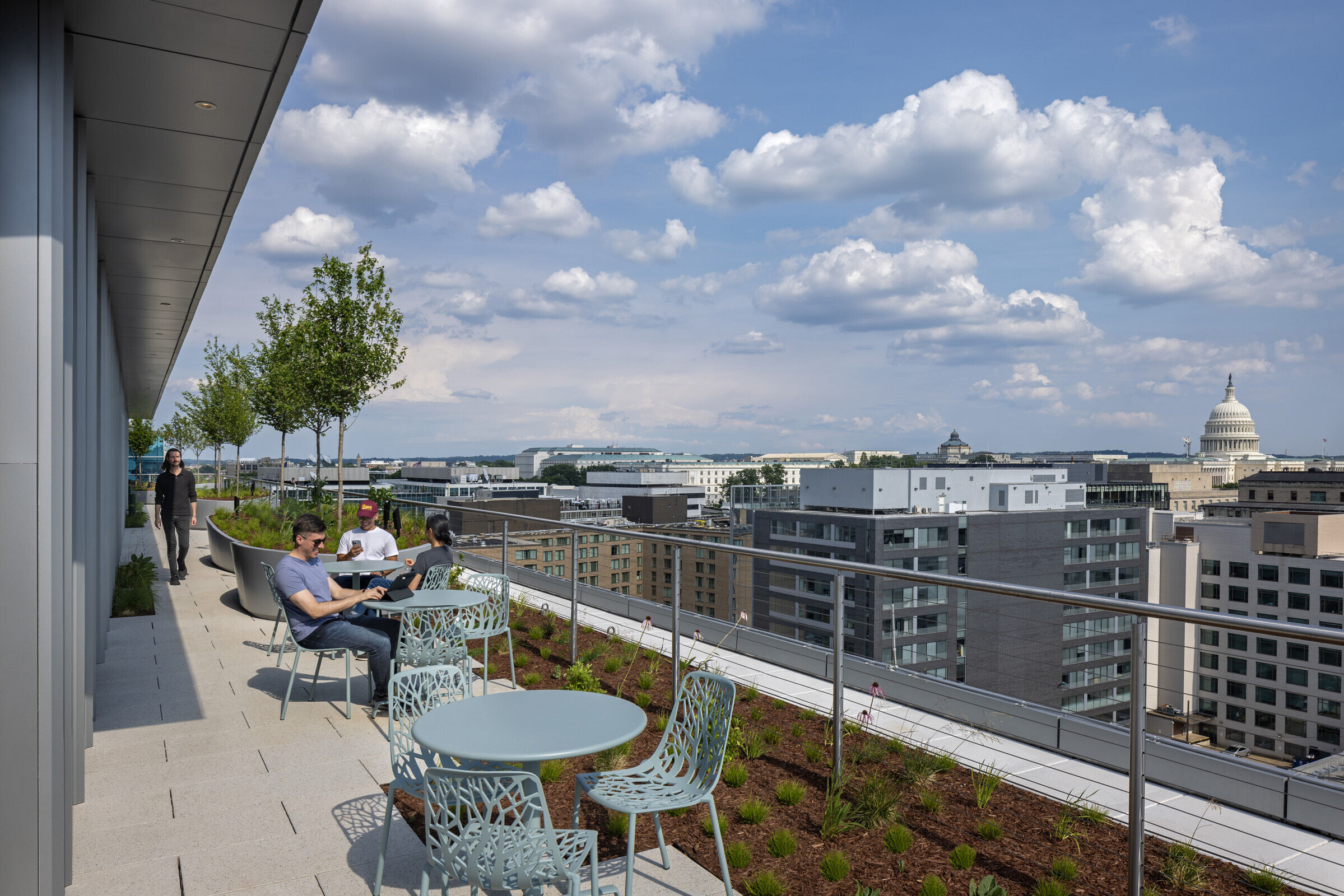
Team:
Client: Georgetown University
Architect: Robert A.M. Stern Architects (RAMSA)
Sustainability: LEED Platinum (targeting)
Photography: Francis Dzikowski/OTTO
